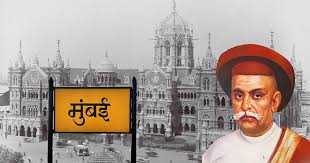Honoring, the Architect of Mumbai (Bombay)

- 15 Mar 2024
Why is it in the News?
The Maharashtra cabinet recently decided to ask the Ministry of Railways to rename Mumbai Central Station after Nana Jagannath Shankarseth.
Who was Nana Jagannath Shankarseth?
- Nana Jagannath Shankarseth was a social reformer, educationist, and philanthropist and often described as the “architect” of Mumbai (then Bombay).
- He made extremely valuable contributions in terms of both ideas and money to multiple sectors, to lay a strong foundation for the city.
- Shankarseth was greatly inspired by the legendary merchant and philanthropist Sir Jamsetjee Jeejeebhoy.
- As a social reformer and community leader, Shankarseth earned the goodwill of both Indians and the British.
- He became the first Indian to be nominated to the Legislative Council of Bombay.
Shankarseth’s Most Significant Contributions:
- Education: Shankarseth was deeply committed to the growth and spread of education in Bombay, and donated land owned by his family for educational institutions.
- Like many social reformers of his age, he believed that Indians could progress through education.
- He also worked for the education of girls and women.
- Shankarseth founded the Native School of Bombay, which was renamed first as the Bombay Native Institution, and then as the Board of Education.
- Finally, this institution evolved into the prestigious Elphinstone College.
- Museum, Temples: Shankarseth was among the wealthy donors who helped promote Dr Bhau Daji Lad Museum in Byculla, which was designed by a famous London-based architect.
- The Bhawani Shankar Temple near Nana Chowk was Shankarseth’s tribute to his late mother Bhawanibai Murkute.
- He also built a Ram temple.
- Railways: The first train in India ran between Boribunder and Thane on April 16, 1853.
- The 34-km project was undertaken by the Great Indian Peninsular Railway Company.
- The committee that gave the project impetus included Sir Jamsetjee Jeejeebhoy and Nana Shankarseth.
